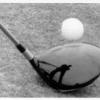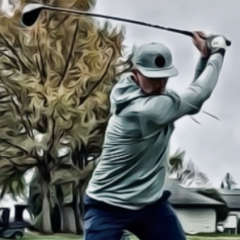-
Posts
507 -
Joined
-
Last visited
About alfriday101
- Birthday 03/26/1958
Profile Information
-
Gender
Male
-
Location
Iowa/Florida
-
Interests
Photography, travel, gardening.
Player Profile
-
Handicap
7.1
Recent Profile Visitors
4,245 profile views
alfriday101's Achievements

(2/14)
1.3k
Reputation
-

Golf Trip Preparation - Scotland Pilgrimage
alfriday101 replied to AvgGolferinPA's topic in General Q&A
Unfortunately, luggage can be lost or delayed. St. Andrews has good club rentals. I recommend taking a carry on pilot case and pack essential golf clothing in the carry on. When I travel overseas to golf, I pack one pair of golf shoes, rain gear, layers, a glove and one or two extra shirts and undies in the carry on. Enough clothes to wear and play for a couple of days until the bags arrive. AirTags in your golf bag and suitcase are also a good idea. -
I thought this was interesting. I went to the Louvre today and found this set up in the “studio” section where kids can make art. The area now has an Olympic focus. Who would have thought it, a Ping sponsored simulator in the museum.
-
As an aside, I am very interested in the approach Paris is taking to the games. Compared to past cities that built massive Olympic complexes, Paris is mostly using existing stadiums and erecting temporary stadiums for the games. The opening ceremonies are not a stadium event, but a fleet of cruise barges down the Seine. The venues are spread throughout the city. Much of the cost of improvements are for infrastructure that will be usable by the population after the games end. For example, they are erecting a temporary stadium in the Champ de Mars, a block from the Eiffel Tower for beach volleyball. They started erecting it March 1st and are now working on the second level of the stadium. They are erecting a temporary stadium in the Place de la Concord for the skateboarding and other new events. the games will showcase the city. Photos show design of finished stadium and progress as of yesterday.
-
I start most days with a 10 minute yoga session that also includes the McGill 3. I highly recommend it to all golfers. I'm 65 and I am more flexible (and less injury prone) now than in my 30s. It definitely helps with golf--a stronger core, bigger turn and a lot less soreness after a round. I also will do longer sessions a couple of times a week to work on specific areas of tightness. The past year I have been doing parts of my yoga routine on a vibration plate. It ups the stretching/strengthening to 11. The vibration plate especially helps hit hard to stretch areas like the psoas and illiacis, and for me, the upper back (between the shoulder blades).
-
I play Edel Sl irons. My SW through 7 iron are all the same length. The 6-4 are 1/2 inch longer. I also have Cobra SL hybrids , but they are 3/4 inch longer than their standard SL, but still shorter shafted than their standard hybrids. So basically, I have a set of three different lengths for "SL" irons/hybrids. When Edel first came out with SL irons, he did a number of interviews/podcasts and talked about combo lengths. He was a proponent. He said it made sense for a lot of players to have the lower lofted irons a bit longer than the higher lofted irons. He foresaw sets with two and three lengths. The golfer gets more consistency than with a standard 1/2 inch change per club, but the golfer isn't tied into strict single length. I was fit for my clubs by an Edel fitter. The extra length on the low lofted irons helped my gapping, but I don't even notice the difference when playing. I'm glad to see a company pursuing this even though Edel sold. I'll have to follow the company to see how they do.
-

What’s your favorite piece of gear that isn’t a club?
alfriday101 replied to aguybadatgolf's topic in General Equipment Talk
I collect ball markers on my travels. I keep them in a plastic bag and randomly grab one out before play. Brings back good memories. -
I really like the above video. To me it explains what is really going on with the putting stroke. How the club shaft goes straight back and forward on plane, but the club head rotates open and closed to the line, but stays square to the plane. Clarified a lot of concepts for me.
-

Help with Golf Swing
alfriday101 replied to patrickosullivan88's topic in Lessons, Drills, Mental Game, and Fitness Tips
Here is a video by Malaska with three drills that directly apply to the issues mentioned in the OP. While the video title refers to drills for juniors, the drills apply to all golfers and are great drills for syncing the lower body and upper body and improving balance. I highly recommend the "Feet Together" drill. Here is another take on the drill for more advanced players: As for getting your weight to the left side, check out the "Gary Player Drill", a/k/a the "Walk through Drill." -
I'll throw out a drill that really helped me to develop feel with the putter. Short, in, long. I set out four tees in a box 3 feet by 3 feet, or 2 feet by 2 feet on shorter putts. I will put to a target at the front of the box. I use either a ball marker or a fake hole--a round, rubber jar opener tossed on the green. Putt from various distances to the hole. Key: Don't watch the ball. Call out before the ball stops whether it will stop short, long, or in the box. Can also be done with eyes closed.
-
I regularly use a rangefinder. Not once has my rangefinder read a putt for me, raked a bunker, told me how the wind coming over the dunes will knock my shot down, found a ball in the woods, given me a line off the tee, cleaned my club, carried my bag, held my umbrella, told me to aim away from the pin because the green slopes toward the bunker, told me a joke....
-
I'm watching ISU/Michigan to see will beat up on the Hawkeyes in Indy next Saturday.
-
Stoop's last game at Kentucky? Rumors he's off to A&M. I remember him as a linebacker.
-
I had to think about this question for a bit. I realized that I tend to pay more attention to shotmaking and course management when watching the LPGA v PGA. I hit the ball about the same distance as some of the LPGA players. I like seeing how they approach the game: strategy, club selection, etc. I don't have a 200 yard 7 iron, so I have a hard time relating to the PGA distances.






.thumb.jpg.45915f472ac44add417a3893e9ae5bce.jpg)







